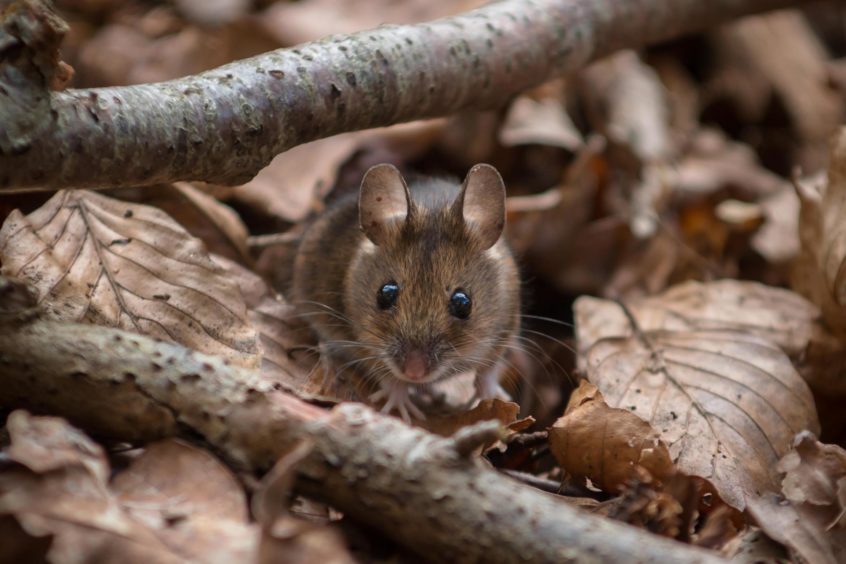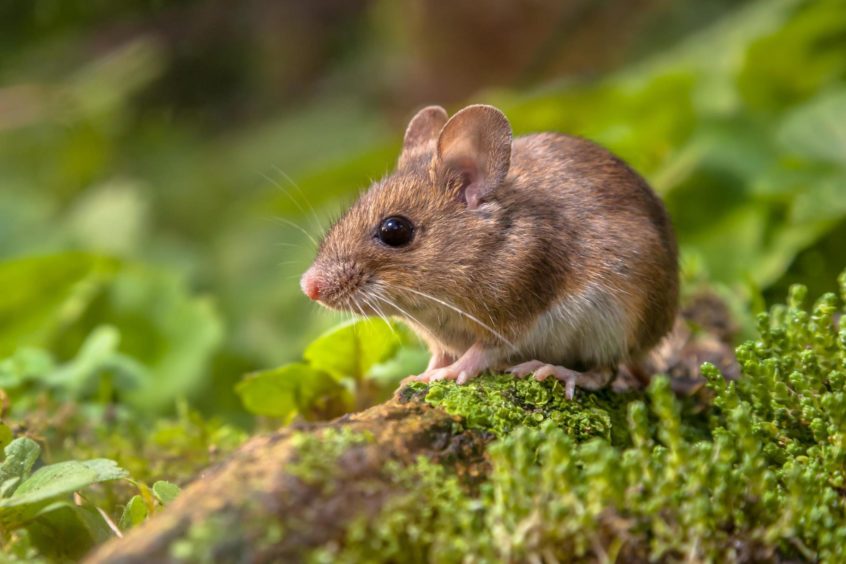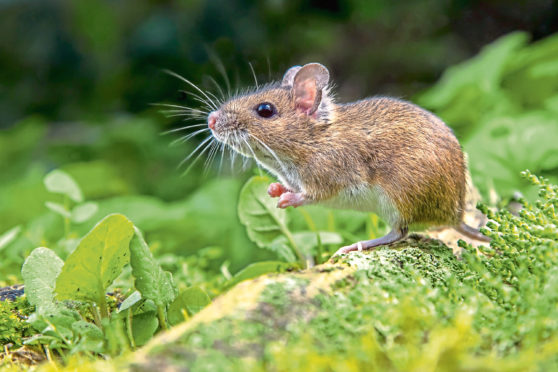It was like staring at an image from a fairy-tale book, such was the shape and form of these beautifully proportioned fungi clinging to a moss-covered log by the River Earn.
They were bonnet mushrooms, their steep, dark-grey conical caps sculpted like witches’ hats. I reckoned this was a species known as the grooved bonnet, but fungi are often notoriously difficult to identify, and I couldn’t be certain.
No matter, for their timeless beauty set against the verdant moss on this tumbled tree trunk was a wonder to behold. As I examined the bonnets, I noticed there were several acorns scattered on the ground by my feet.
Acorns are the lifeblood of oak woodlands, the nuts being a rich and nutritious food avidly sought out by jays, squirrels, and wood mice. Indeed, as I continued on my way, I could hear a party of jays screeching in the trees ahead of me.
Despite their bold and brassy plumage, jays are shy birds, and are always hard to approach close. And, their beauty is only skin deep, for the call of a jay is raucous and irritating, almost unseemly in its grating harshness.
I enjoy visiting this part of the River Earn by Crieff, the towering trees and tumble of the water’s flow a perfect complement to one another. The numerous acorns on the ground also got me thinking about wood mice. They are seldom seen creatures because they are mainly nocturnal, but when I set my trail cameras in local woodlands, they almost always appear on film, highlighting how common these little rodents are. They move fast, jinking this way and that, and never stay still for any length of time.

Unlike field and bank voles, which invariably prefer grass and other thick cover to hide in amongst, wood mice often forage on the bare woodland floor, making them incredibly vulnerable to tawny and long-eared owls. But an owl must be quick and agile to catch one, especially since the kangaroo-like hind legs of a wood mouse enables it to leap a decent distance across the ground should danger threaten.
Wood mice tend keep themselves low during bright, moonlit nights as a precaution against owl and fox attacks, and their large ears and bright glistening eyes also help in detecting danger. But despite this, every step taken is fraught with danger.

The renowned Scottish naturalist David Stephen remarked upon this perpetual vulnerability, when he wrote: “The wood mouse can climb up, down and around, move with bewildering speed, and jump like a flea.
“Despite this agility, the vertical flea-jump does not save the wood mouse from the fox, which can snap it out of the air as easily as a terrier can snatch a fly”.
Info
Although abundant in woodland, wood mice occur in many other habitats, including road verges, gardens, hedgerows, fields, and moorland. They sometimes enter houses.










